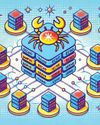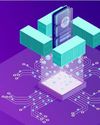
The metaverse is well-known today. However, there are many misconceptions about it. These include: it is meant only for gaming, the banking sector is adopting metaverse faster, the metaverse is subject to many security threats, large investments are needed for its infrastructure (wearables, GPU-based systems), and so on.
Technologists claim that metaverse is digital nirvana, as it immerses users into the digital world and gives them a virtual experience of anything they do to interact with the platform. For CIOs and CTOs, the metaverse opens new business models and new ways of architecting solutions for an improved customer experience in a connected digital world.
The Gartner ‘Predicts 2022’ report claims that by 2026, 25 per cent of the world’s population will spend a minimum of one hour per day in the metaverse. Metaverse is a revolutionary technology that will open up new-age business models in healthcare (virtual hospital consultation, virtual advice for critical treatments), retail (3D immersive experience-based online stores), manufacturing (virtual quality checks and inspection), banking (branchless digital banks), insurance (digital avatar for marketing new insurance products, consultation for claims), and many more.
The technologies that make up the metaverse
Metaverse is not a technology in itself – it is an amalgamation of a range of technologies. Some of the important ones are listed below.
Augmented reality: This offers a virtual immersive user experience that combines digital and physical worlds to give a real-life experience using devices like a head-mounted display and HoloLens.
Virtual reality: This gives a virtual world experience to users (like a digital game) where they start feeling they are part of the virtual world.
This story is from the {{IssueName}} edition of {{MagazineName}}.
Start your 7-day Magzter GOLD free trial to access thousands of curated premium stories, and 9,000+ magazines and newspapers.
Already a subscriber ? Sign In
This story is from the {{IssueName}} edition of {{MagazineName}}.
Start your 7-day Magzter GOLD free trial to access thousands of curated premium stories, and 9,000+ magazines and newspapers.
Already a subscriber? Sign In

Helgrind: Detecting Synchronisation Issues in Multithreaded Programs
Let's explore how Helgrind can be used to detect and debug multithreading issues with the help of a multithreaded C program.

The Perfect Process of Booting a PC
Booting a PC seems as simple as eating a cake. But are you aware of all that goes on behind-the-scenes to bake a delicious cake or seamlessly boot a PC?

Exploring eBPF and its Integration with Kubernetes
eBPF, a game-changing technology that extends the capabilities of the Linux kernel, offers significant advantages for Kubernetes networking. It also greatly improves Kubernetes observability by capturing detailed telemetry data directly from the kernel. Read on to find out how its integration with Kubernetes has immense benefits.

Deploying Generative AI LLMs on Docker
Built on massive datasets, large language models or LLMS are closely associated with generative Al. Integrating these models with Docker has quite a few advantages.

Containerisation: The Cornerstone of Multi-Cloud and Hybrid Cloud Success
Open source containerisation software provides the flexibility, cost-effectiveness, and community support needed to build and manage complex multi-cloud and hybrid cloud environments. By leveraging this software, businesses can unlock the full potential of multicloud and hybrid cloud architectures while minimising vendor lock-in risks.

From Virtual Machines to Docker Containers: The Evolution of Software Development
Containerisation and Kubernetes have eased software development, making it faster and better. Let's see where these are headed, looking at trends that are making life easier for developers.

India's Leap in Supercomputing: Innovating for Tomorrow
As India strides towards self-sufficiency in supercomputing, embracing this evolution isn't just an option-it is pivotal for global competitiveness and technological leadership.

SageMath: A Quick Introduction to Cybersecurity
In the previous articles in this SageMath series, we delved into graph theory and explored its applications using SageMath. In this seventh article in the series, it is time to shift our focus to another crucial subfield of computer science: cybersecurity and cryptography.

Efficient Prompt Engineering: Getting the Right Answers
OpenAl's GPT-3 and GPT-4 are powerful tools that can generate human-like text, answer questions, and provide insights. However, the quality of these outputs depends heavily on how you frame the input, or prompt. Efficient prompt engineering ensures you get the right answers by designing inputs that guide the AI towards relevant, clear, and useful responses. Let's find out how to craft effective prompts with examples.

Analysing Linus Torvald's Critique of Docker
This article looks at Docker's security flaws, particularly its shared-kernel model, and contrasts it with traditional VMs for better isolation. It discusses Linus Torvalds' concerns, explores mitigation techniques, and proposes a roadmap for building a more secure containerisation platform using hardware-assisted virtualisation, true isolation, and a robust orchestration layer.